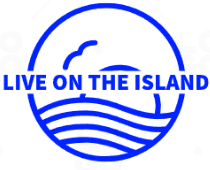ALIVE - E COURSE -EN
A license is a legal permission granted by the copyright holder to another party, allowing them to use the copyrighted material in specific ways. It is a contractual agreement that outlines the terms and conditions under which the licensee can use the copyrighted work.
When a license is granted, it provides the licensee with certain rights and restrictions, which may include the right to reproduce, distribute, display, perform, or modify the copyrighted material. The license can be non-exclusive (allowing licenses to be granted to multiple parties) or exclusive (limiting usage rights to a single licensee).
Licenses can be obtained for various types of intellectual property, including software, music, images, videos, and more. The terms of the license agreement determine the scope of authorized use and any limitations or obligations imposed on the licensee.
Copyright is a legal right granted to the creator or owner of an original work of authorship. It automatically protects various forms of creative expression, such as literary works, artistic works, music, films, software code, and more, against unauthorized use or reproduction.
Copyright grants the creator exclusive rights over their work, including the rights to reproduce, distribute, display, perform, and create derivative works based on the original. These rights generally exist from the moment the work is created and have a specific duration, depending on the jurisdiction.
Unlike a license, which grants permission to use copyrighted material, copyright itself is the legal framework that protects creators' rights and allows them to control and monetize their work. Copyright ensures that others cannot use, copy, or benefit from someone else's original creation without permission or outside the scope of fair use and other applicable exceptions.
In summary, a license is a permission granted by the copyright holder to use their copyrighted material under specific terms and conditions, while copyright is the legal protection granted to creators, providing them with exclusive rights over their original works. Licenses enable authorized use of copyrighted material, while copyright establishes ownership and control of intellectual property.
7.1. Application of Copyright and Licenses to Data, Information, and Digital Content
As you have seen, licenses can be applied to copyrighted material to grant specific permissions to the licensee for the use of that material. In these cases, the copyright still remains the property of the creator, but the creator has chosen to allow others to use their work. Sometimes, licenses are acquired through purchase and other times, the creator grants them for free.
Licenses can be applied to allow reuse, redistribution, creation of derivative works, and commercial use.
Creative Commons is the most widely used and accessible free licensing scheme, but there are others used by specific communities. Commercial entities that own the copyright of an article, such as a journal article, may also request licenses. These licenses generally establish limited use for users and are available for a fee.
Creative Commons licenses are applied by the copyright owner to their own works. These are the most widely used licenses globally and consist of four components organized into six configurations:
BY: Attribution required.
NC: Non-commercial use.
ND: No derivative works.
SA: Share alike - the license must be the same for any derivative work.
Components ND and SA cannot be combined, as SA only applies to derivative works.
The six licenses (excluding CC-0, which is equivalent to the Public Domain) are:
CC-BY
CC-BY-SA
CC-BY-ND
CC-BY-NC
CC-BY-NC-SA
CC-BY-NC-ND
The following table illustrates the permissions allowed by each license.
CreativeCommons.org
The Creative Commons website provides more information about licensing and has a useful license generator for your work.
This link shows best practices for attributing content with a Creative Commons license.
Copyleft is a play on words with "copyright" and is a practice that grants users the right to freely distribute and modify the original work, but only on the condition that derivative works have the same rights license. It is similar to the SA stipulation of Creative Commons licenses.
Copyleft licenses grant everyone who possesses the work the same rights as the original author, including:
Freedom 0 – the freedom to use the work,
Freedom 1 – the freedom to study the work,
Freedom 2 – the freedom to copy and share the work with others,
Freedom 3 – the freedom to modify the work and the freedom to distribute modified and, therefore, derivative works.
For a work to be truly copylefted, the license must also ensure that the author of a derivative work can only distribute such work under the same license or an equivalent.
